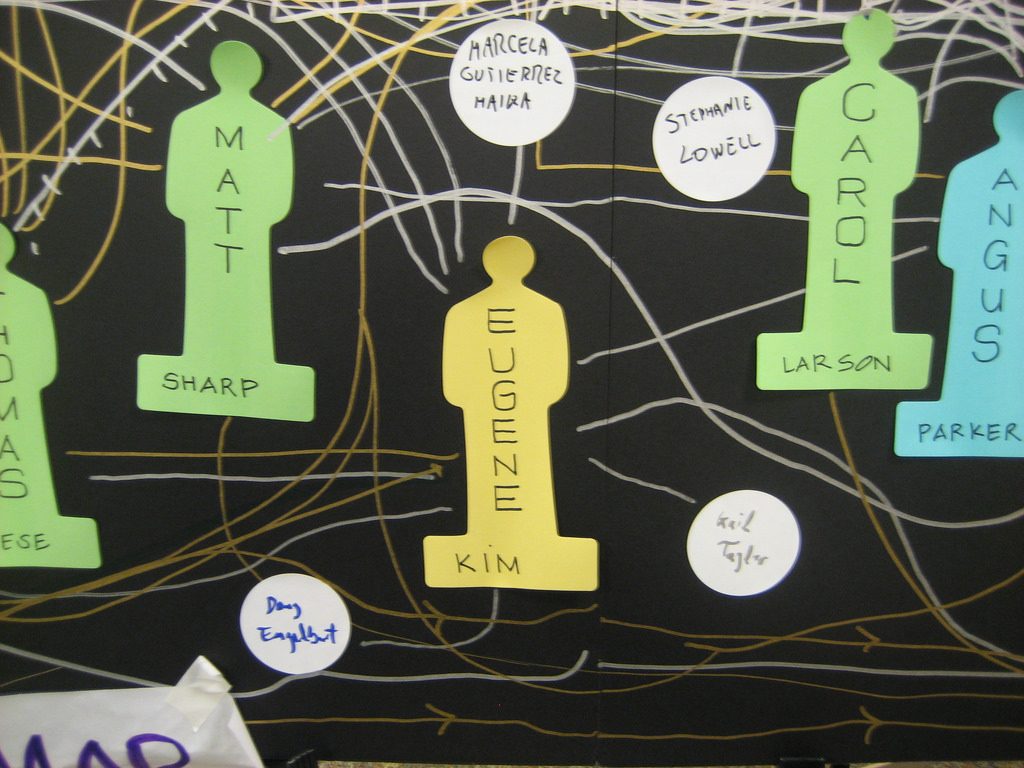As I prepare for a pre-conference workshop and conference workshop at the International Society for the Scholarship of Teaching and Learning 2016, I am reading and blogging on how university instructors learn about teaching through personal networks (my four previous posts on the topic can be found here). The ISSoTL workshops are part of a research project I am collaborating on with Gary Poole and Roselynn Verwoord.
Today’s post looks at “significant conversations” and consists of my notes from a paper by Roxå and Mårtensson, two lovely people and terrific scholars I had the pleasure of meeting in 2008.
Reference: Roxå, T. & Mårtensson, K. (2009). Significant conversations and significant networks: Exploring the backstage of the teaching arena. Studies in Higher Education, 34(5), 547-559.
**************
This paper presents results from a study in which Roxå & Mårtensson surveyed 109 university instructors to learn more about their teaching and learning conversation partners. Participants were from the following disciplines: engineering studies, social sciences, humanities.
Participants responded to these questions:
- With how many people do you have engaging conversations about teaching and learning?
- Where are these conversational partners found?
- What characterizes your conversations? (Please describe them.)
- Do you consider your local professional culture to be supportive or nonsupportive of such conversations about teaching and learning? (this question was only included in the later questionnaires)
The researchers drew on Handal’s (1999) concept of critical friends to “focus the respondents on individuals with whom they had sincere and serious discussions about teaching and learning” (p.550).
Summary of results
With how many people do you have engaging conversations about teaching and learning?
- 83% of respondents had up to 10 conversational partners (there were differences among the disciplines)
- Roxå & Mårtensson found that “university teachers rely on a limited number of individuals to test ideas or solve problems related to teaching and learning” (p.556)
Where are these conversational partners found?
The majority of participants discussed teaching with colleagues within their own discipline. Conversational partners, however, were located within or outside the individual’s institution and discipline, and therefore the authors concluded that “significant networks” have no boundaries surrounding them.
What characterizes your conversations?
Private conversations:
- conversations rarely took place in formal meetings (they took place “backstage”1)
- though many were backstage, the conversations were not isolated from the surrounding culture
Trustful conversations:
- conversations were about a range of topics (intellectual and emotional)
- there was mutual trust among partners and partners often shared similar interests and values
- at times, the conversations did not align with the official discourse within the participant’s culture/context
Intellectually intriguing conversations:
- conversations dealt with important disciplinary content and challenges about how to support student learning
- participants used these conversations to make sense of experiences, deal with problems, and plan/evaluate actions.
- Roxå & Mårtensson found that most participants were not drawing on pedagogical literature and theory as they were having these conversations; nor were they making public the results of their inquiry. Rather, they were using “personal theories” (p.556)
“Do you consider your local professional culture to be supportive or non-supportive of such conversations about teaching and learning” (this question was posed to only 50 of the participants)
- There is a clear link between how encouraging a culture is and number of conversational partners (i.e., in a supportive culture, individuals have more conversational partners)
Implications
Significant conversations have the potential to help university teachers see things through someone else’s perspective. They may shape and/or expand an individual’s identity as teachers.
In the words of the authors: “It is likely that these conversations open up the possibility of constructing and maintaining–and perhaps partly changing–an understanding about the realities of teaching.” (p.555)
**************
Footnote 1: Erving Goffman’s wrote about the concept of “front stage” and “back stage” behaviors in his book The Presentation of Self in Everyday Life (1959). Goffman proposes that we have two different modes of presenting our selves: one when we are ‘on’ for others (front stage) and another when we let down our guard (back stage). For a succinct introduction to these concepts, see here at “Everyday Sociology“.




